Patton (film)
9.2 /10 1 Votes
95% Rotten Tomatoes 91% Metacritic Genre Biography, Drama, War Country United States | 8/10 IMDb 4/4 Roger Ebert Director Franklin J. Schaffner Duration Language English | |||||||||||||||||||||||||||||||||
 | ||||||||||||||||||||||||||||||||||
Release date April 2, 1970 (1970-04-02) Writer Francis Ford Coppola (screen story and screenplay), Edmund H. North (screen story and screenplay), Ladislas Farago (based on factual material from Patton: Ordeal and Triumph), Omar N. Bradley (based on factual material from: A Soldiers Story) Initial release February 18, 1970 (Los Angeles) Cast George C. Scott (Gen. George S. Patton Jr.), (Gen. Omar N. Bradley), (Capt. Chester B. Hansen), (Brig. Gen. Hobart Carver), Carey Loftin (General Bradley's driver), Albert Dumortier (Moroccan minister)Similar movies The Thin Red Line , Fury , Saving Private Ryan , Captain America: The First Avenger , When Trumpets Fade , Too Late the Hero Tagline The Rebel Warrior | ||||||||||||||||||||||||||||||||||
Patton theatrical movie trailer 1970
Patton is a 1970 American epic biographical war film about U.S. General George S. Patton during World War II. It stars George C. Scott, Karl Malden, Michael Bates and Karl Michael Vogler. It was directed by Franklin J. Schaffner from a script by Francis Ford Coppola and Edmund H. North, who based their screenplay on the biography Patton: Ordeal and Triumph by Ladislas Farago and Omar Bradley's memoir A Soldier's Story. The film was shot in 65 mm Dimension 150 by cinematographer Fred J. Koenekamp and has a music score by Jerry Goldsmith.
Contents
- Patton theatrical movie trailer 1970
- Patton 1970 trailer
- Plot
- Script preparation
- Opening
- Locations
- Use of footage
- Music
- 2010 Intrada Records Album
- First telecast
- Home media
- Critical response
- Accolades
- Sequel
- References
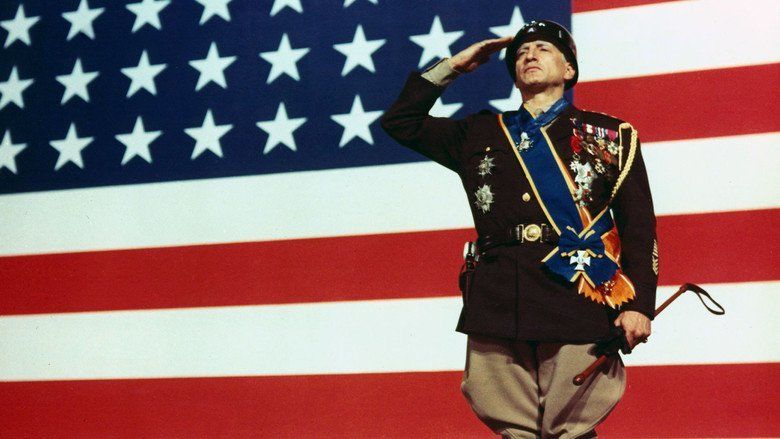
Patton won seven Academy Awards, including Best Picture, Best Director and Best Original Screenplay. Scott won Best Actor for his portrayal of General Patton, but declined to accept the award. The opening monologue, delivered by George C. Scott as General Patton with an enormous American flag behind him, remains an iconic and often quoted image in film. The film was successful, and in 2003, Patton was selected for preservation in the United States National Film Registry by the Library of Congress as being "culturally, historically or aesthetically significant". The Academy Film Archive preserved Patton in 2003.
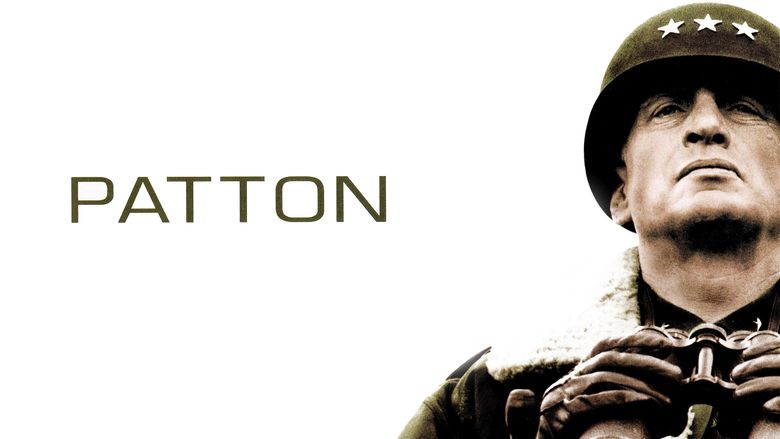
Patton 1970 trailer
Plot
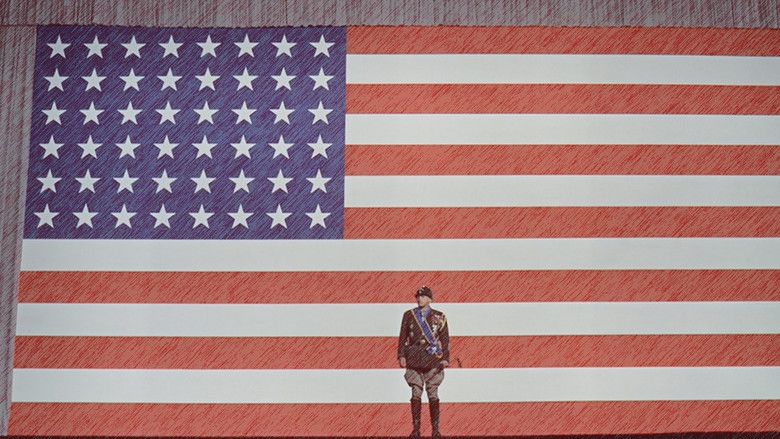
As the film begins General George S. Patton addresses an unseen audience of American troops to raise their morale for the war effort, focusing in particular on the value placed on winning by American society.
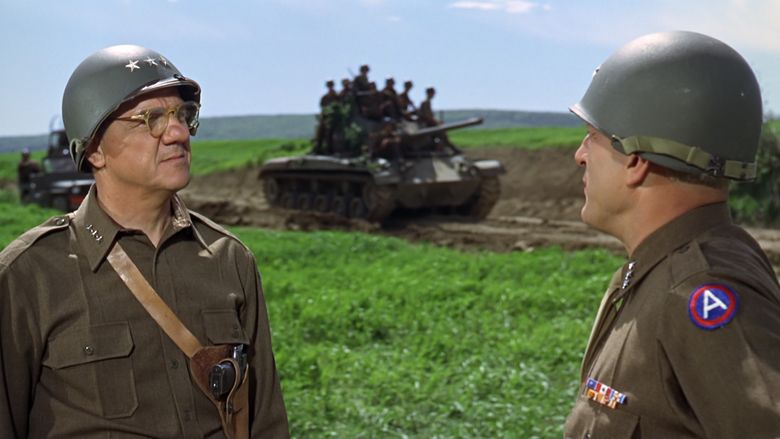
Following the humiliating American defeat at the Battle of the Kasserine Pass in 1943, Patton is placed in charge of the American II Corps in North Africa. Upon his arrival, he enforces discipline amongst his troops, e.g. fining a cook $20 for not wearing his army issue leggings. Patton is then summoned to a meeting with Air Marshal Coningham of the Royal Air Force, where he claims that the American defeat was caused by lack of air cover. Coningham promises Patton that he will see no more German aircraft – but seconds later the compound is strafed by Luftwaffe planes. Patton then defeats a German attack at the Battle of El Guettar; his aide Captain Jenson is killed in the battle, and is replaced by Lieutenant Colonel Codman. Patton is bitterly disappointed to learn that Erwin Rommel, Commander of the German-Italian Panzer Army, was on medical leave due to having diphtheria, but Codman reassures him that: "If you've defeated Rommel's plan, you've defeated Rommel".
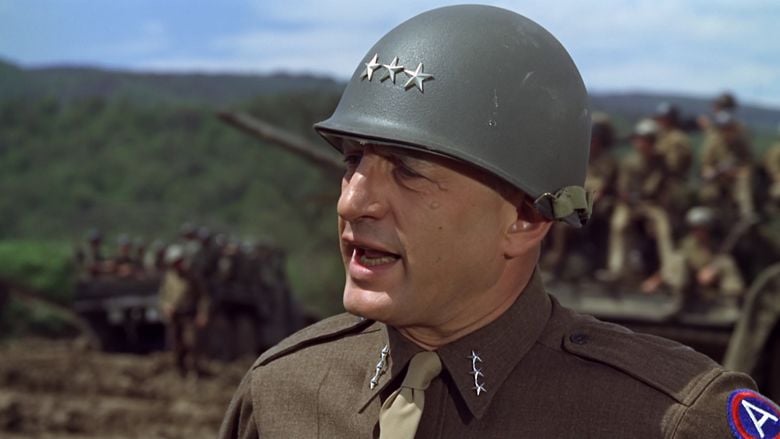
After success in the North Africa campaign, Patton and Bernard Montgomery separately come up with plans for the Allied invasion of Sicily. Patton's proposal to land his Seventh Army in the northwest of the island with Montgomery in the southeast (therefore potentially trapping the German and Italian forces in a pincer movement) initially impresses their superior General Alexander, however General Eisenhower rejects it in favor of Montgomery's more cautious plan, which places Patton's army in the southeast, covering Montgomery's left flank. While the landing is successful, the Allied forces become bogged down, causing Patton to defy orders and push his army northwest to Palermo, and then to the port of Messina in the northeast, narrowly beating Montgomery to the prize, although several thousand German and Italian troops are able to flee the island. Patton insists that his feud with Montgomery is due to the latter's determination to be the "war-hero," and to deny the Americans any chance of glory. However, Patton's aggression does not sit well with his subordinates Bradley and Lucian Truscott.
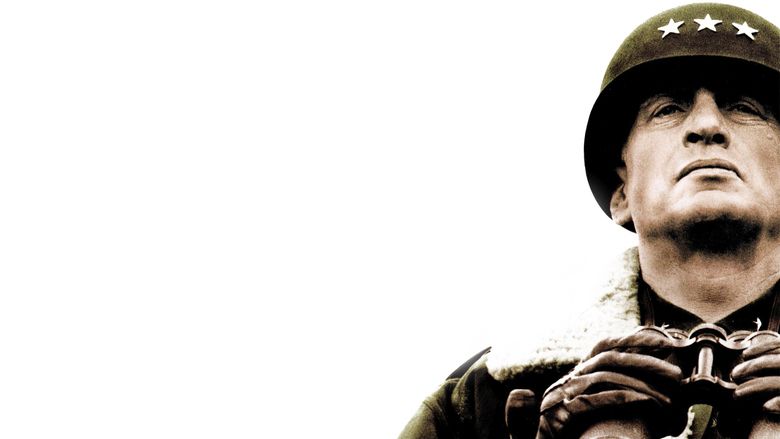
While on a visit to a Field Hospital where many American soldiers lie wounded or dead, Patton notices a shell-shocked soldier crying. Calling him a coward, Patton slaps the soldier and even threatens to shoot him, before demanding his immediate return to the frontline. Because of this, Patton is relieved of command and by order of Eisenhower, forced to apologize to the soldier, to those present in the Field Hospital, and to his entire command, unit by unit.
Because of this, and for being too liberal to the press, Patton is sidelined during the D-Day landings in 1944. Instead, he is placed in command of the phantom First United States Army Group in southeast England as a decoy. German General Alfred Jodl is convinced that Patton will lead the invasion of Europe.
After begging his former subordinate Bradley for a command before the war ends, Patton is placed under him in command of the Third Army and performs brilliantly by rapidly advancing through France, but his tanks are forced to a standstill after they run out of fuel – the supplies being given to Montgomery's bold Operation Market Garden, much to his fury. Later, during the Battle of the Bulge, Patton relieves the town of Bastogne and then smashes through the Siegfried Line and into Germany.
At a war-drive in Knutsford, England, General Patton had remarked that the United States and the United Kingdom would dominate the post-war world, viewed as an insult to the Soviet Union. After Germany capitulates, Patton directly insults a Russian general at a post-war dinner; fortunately, the Russian insults Patton back, defusing the situation. Patton then makes an offhand remark comparing the Nazi Party to the political parties in the US. In the end, Patton's outspokenness loses him his command once again, though he is kept on to see to the rebuilding of Germany, with the disconcerting incident of a runaway ox-cart narrowly missing Patton foreshadowing the general's actual death in a car accident in December 1945.
Patton is last seen walking Willie, his bull terrier, and relating in a voice over that a returning hero of ancient Rome was honored with a "triumph," a victory parade in which "a slave stood behind the conqueror, holding a golden crown, and whispering in his ear a warning: that all glory ... is fleeting."
Script preparation
Attempts to make a film about the life of Patton had been ongoing for over fifteen years, commencing in 1953. Eventually, the Patton family was approached by the producers for help in making the film. The filmmakers desired access to Patton's diaries, as well as input from family members. However, by unfortunate coincidence, the producers contacted the family the day after Beatrice Ayer Patton, the general's widow, was laid to rest. After this encounter, the family refused to provide any assistance to the film's producers.
In the end, screenwriters Francis Ford Coppola and Edmund H. North wrote the script based largely on the biographies Patton: Ordeal and Triumph by Ladislas Farago and A Soldier's Story by General of the Army Omar Bradley.
Bradley served as a consultant for the film though the extent of his influence and input into the final script is largely unknown. While Bradley knew Patton personally, it was also well-known that the two men were polar opposites in personality, and there is evidence to conclude that Bradley despised Patton, both personally and professionally. As the film was made without access to General Patton's diaries, it largely relied upon observations by Bradley and other military contemporaries when they attempted to reconstruct Patton's thoughts and motives. In a review of the film, Brigadier General S.L.A. Marshall, who knew both Patton and Bradley, stated, "The Bradley name gets heavy billing on a picture of [a] comrade that, while not caricature, is the likeness of a victorious, glory-seeking buffoon.... Patton in the flesh was an enigma. He so stays in the film.... Napoleon once said that the art of the general is not strategy but knowing how to mold human nature.... Maybe that is all producer Frank McCarthy and Gen. Bradley, his chief advisor, are trying to say." Although reference is made to Allied Commander General Dwight Eisenhower throughout the film, he is not portrayed on screen. At the time of production, Eisenhower was still alive, but he died in March 1969, before the film was released.
Opening
The film opens with Scott's rendering of Patton's speech to the Third Army, set against a huge American flag. Coppola and North had to tone down Patton's actual words and statements in the scene, as well as throughout the rest of the film, to avoid an R rating; in the opening monologue, the word fornicating replaced fucking when he was criticizing The Saturday Evening Post. Also, Scott's gravelly and scratchy voice is the opposite of Patton's high-pitched, nasal and somewhat squeaky voice, a point noted by historian S.L.A. Marshall. However, Marshall also points out that the film contains "too much cursing and obscenity [by Patton]. Patton was not habitually foul-mouthed. He used dirty words when he thought they were needed to impress."
When Scott learned that the speech would open the film, he refused to do it, as he believed that it would overshadow the rest of his performance. Director Schaffner assured him that it would be shown at the end. The scene was shot in one afternoon at Sevilla Studios in Madrid, with the flag having been painted on the back of the stage wall.
All the medals and decorations shown on Patton's uniform in the monologue are replicas of those actually awarded to Patton. However, the general never wore all of them in public and was in any case not a four-star general at the time he made the famous speeches on which the opening is based. He wore them all on only one occasion, in his backyard in Virginia at the request of his wife, who wanted a picture of him with all his medals. The producers used a copy of this photo to help recreate this "look" for the opening scene.
Locations
Most of the film was shot in Spain. One scene, which depicts Patton driving up to an ancient city that is implied to be Carthage, was shot in the ancient Roman city of Volubilis, Morocco. The early scene, where Patton and Muhammed V are reviewing Moroccan troops including the Goumiers, was shot at the Royal Palace in Rabat. One unannounced battle scene was shot the night before, which raised fears in the Royal Palace neighborhood of a coup d'état. One paratrooper was electrocuted in power lines, but none of this battle footage appears in the film. The scene at the dedication of the welcome centre in Knutsford, Cheshire, England, was filmed at the actual site. The scenes set in Africa and Sicily were shot in the south of Spain (Almeria), while the winter scenes in Belgium were shot near Segovia (to which the production crew rushed when they were informed that snow had fallen).
It has been noted that in the scene where Patton arrives to establish his North African command, a supposedly "Arab" woman is selling "pollos y gallinas" (chickens and hens) in Spanish, which is not normally spoken by local people in Tunisia (though it is in the north of Morocco, Spanish Protectorate from 1912 to 1956).
Use of footage
A sizeable amount of battle scene footage was left out of the final cut of Patton, but a use was soon found for it. Outtakes from Patton were used to provide battle scenes in the made-for-TV film Fireball Forward, which was first broadcast in 1972. The film was produced by Patton producer Frank McCarthy and Edmund North wrote the screenplay. One of the cast members of Patton, Morgan Paull, appeared in this production.
Music
The critically acclaimed score for Patton was composed and conducted by the prolific composer Jerry Goldsmith. Goldsmith used a number of innovative methods to tie the music to the film, such as having an echoplex loop recorded sounds of "call to war" triplets played on the trumpet to musically represent General Patton's belief in reincarnation. The main theme also consisted of a symphonic march accompanied by a pipe organ to represent the militaristic yet deeply religious nature of the protagonist. The music to Patton subsequently earned Goldsmith an Academy Award nomination for Best Original Score and was one of the American Film Institute's 250 nominees for the top twenty-five American film scores. The original soundtrack has been released three times on disc and once on LP: through Twentieth-Century Fox Records in 1970, Tsunami Records in 1992, Film Score Monthly in 1999, and a two-disc extended version through Intrada Records in 2010.
2010 Intrada Records Album
Disc One
Disc Two
First telecast
Patton was first telecast by ABC-TV as a three hours-plus color film special in the fall of 1972, only two years after its theatrical release. That was highly unusual at the time, especially for a roadshow theatrical release, which had played in theatres for many months. Most theatrical films at that time had to wait at least five years for their first telecast. Another unusual element of the telecast was that almost none of Patton's profanity-laced dialogue was cut (only two sentences, one of which contained no profanity, were cut from the famous opening speech in front of the giant US flag).
Home media
Patton was first released on DVD in 1999, featuring a partial audio commentary by a Patton historian, and again in 2006, with a commentary by screenwriter Francis Ford Coppola and extra bonus features.
The film made its Region A (locked) Blu-ray debut in 2008 to much criticism, for its excessive use of digital noise reduction on the picture quality. In 2012, a remaster was released with much improved picture quality. In June 2013, Fox UK released the film on Region B Blu-ray but reverted to the 2008 transfer.
Critical response
Roger Ebert said of George C. Scott, "It is one of those sublime performances in which the personalities of the actor and the character are fulfilled in one another." Online film critic James Berardinelli has called Patton his favorite film of all time and "to this day one of Hollywood's most compelling biographical war pictures."
According to Bob Woodward and Carl Bernstein's book The Final Days, it was also Richard Nixon's favorite film. He screened it several times at the White House and during a cruise on the Presidential yacht. Before the 1972 Nixon visit to China, Chinese Premier Zhou Enlai watched this film in preparation for his meeting with Nixon.
Review aggregate website Rotten Tomatoes reported that 95% of critics gave the film a positive review based on 44 reviews, with an average score of 8.4/10. Rotten Tomatoes summarizes the critical consensus as, "George C. Scott's sympathetic, unflinching portrayal of the titular general in this sprawling epic is as definitive as any performance in the history of American biopics."
Accolades
In 1971, Scott's performance won him an Academy Award for Best Actor at the 43rd Academy Awards. He famously refused to accept it, citing a dislike of the voting process and the concept of acting competitions. He was the first actor to do so.
The film won six additional Academy Awards, for Best Picture, Best Director, Best Original Screenplay, Best Film Editing, Best Sound (Douglas Williams and Don Bassman), and Best Art Direction (Art Direction: Urie McCleary and Gil Parrondo; Set Decoration: Antonio Mateos and Pierre-Louis Thévenet). The Best Picture Oscar is on display at the George C. Marshall Museum at the Virginia Military Institute, courtesy of Frank McCarthy.
It was nominated for Best Cinematography, Best Visual Effects and Best Music, Original Score.
In 2006, the Writers Guild of America selected Francis Ford Coppola and Edmund North's adapted screenplay as the 94th best screenplay of all time.
American Film Institute Lists
Sequel
A made-for-television sequel, The Last Days of Patton, was produced in 1986. Scott reprised his title role. The film was based on Patton's final weeks after being mortally injured in a car accident, with flashbacks of Patton's life.
References
Patton (film) WikipediaPatton (film) IMDbPatton (film) Rotten TomatoesPatton (film) Roger EbertPatton (film) MetacriticPatton (film) themoviedb.org
